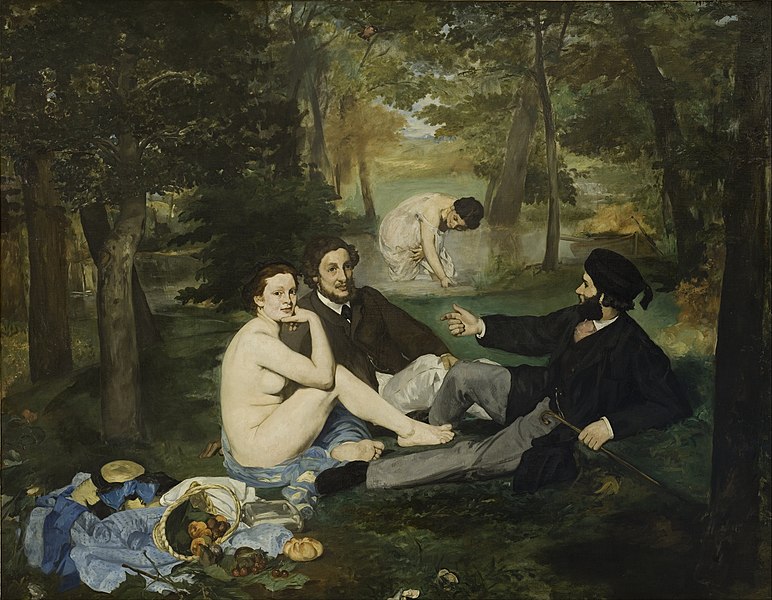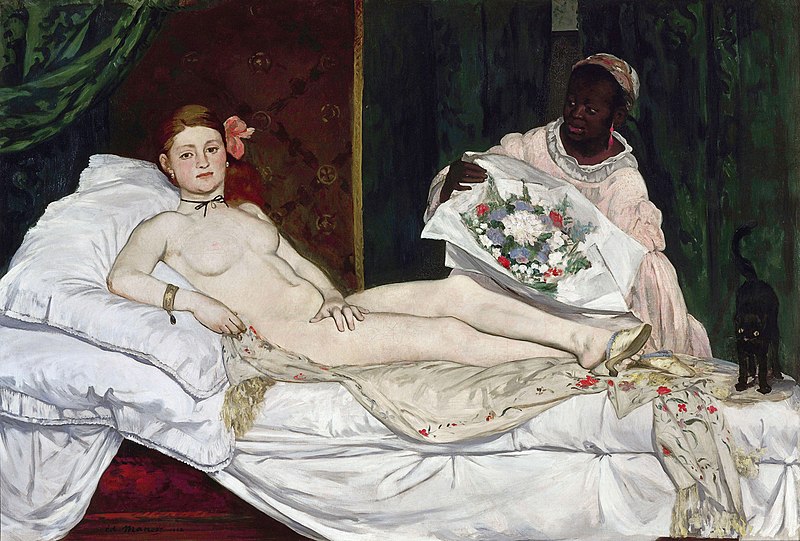Verified: 6 months ago
SafeTensor
The FLUX.1 [dev] Model is licensed by Black Forest Labs. Inc. under the FLUX.1 [dev] Non-Commercial License. Copyright Black Forest Labs. Inc.
IN NO EVENT SHALL BLACK FOREST LABS, INC. BE LIABLE FOR ANY CLAIM, DAMAGES OR OTHER LIABILITY, WHETHER IN AN ACTION OF CONTRACT, TORT OR OTHERWISE, ARISING FROM, OUT OF OR IN CONNECTION WITH USE OF THIS MODEL.
Trained on 44 paintings by the great French artist Édouard Manet (23 January 1832 – 30 April 1883), who is a true innovator and rebel in both art and life. Manet is often associated with Impressionism, but he was not an Impressionist in the strictest sense. Instead, he is best described as a transitional figure between Realism and Impressionism. To see his works, please go to
Manet is probably my favorite French painter. As a teenager, I preferred the prettier, lighter fares by Renoir and Degas. But as I grew older, I started to appreciate Manet's more somber style more and more. The first art poster I ever bought was his unforgettable A Bar at the Folies-Bergère, which I had the fortune of having it all for myself for a whole five minutes when I rushed in to find it first during The Barnes Exhibit Art Gallery of Ontario. 😹
Trivia: According to What does the name Manet mean? The name Manet is a nickname type of surname for a fierce or strong man, which was in turn derived from the Middle-High-German word man, from which the English word man is derived.
The dataset contains only his more impressionistic paintings, so regrettably masterpieces such as Le Déjeuner sur l'herbe (1863) and Olympia (1865) were excluded 😥.
Have fun experimenting with this LoRA, which does a fairly decent job at emulating his brushstrokes and portrait style, and please share your work with us.
From ChatGPT:
Édouard Manet (23 January 1832 – 30 April 1883) was a French painter who played a crucial role in bridging the gap between Realism and Impressionism. His bold, modern approach to subject matter and innovative painting techniques challenged the traditional academic art of his time.
Key Aspects of Manet’s Art
1. Style & Influence
Realism to Impressionism: Manet was initially influenced by Realism (like Gustave Courbet) but later became a major influence on the Impressionists, though he never fully joined the movement.
Bold Brushwork & Flatness: Unlike traditional academic painters who aimed for smooth, polished surfaces, Manet used visible brushstrokes and often flattened space, making his work feel more modern.
Use of Light & Color: He abandoned traditional chiaroscuro (strong light-dark contrasts) for a more direct, high-contrast approach, using brighter colors applied with loose brushstrokes.
2. Controversial & Groundbreaking Works
Le Déjeuner sur l'herbe (1863) – This painting of a nude woman sitting casually among clothed men caused a scandal at the Salon des Refusés because of its bold subject and unconventional composition.
Olympia (1865) – A modern reinterpretation of classical nudes (like Titian’s Venus of Urbino), this painting shocked audiences because of the model’s direct gaze and the suggestion of prostitution.
A Bar at the Folies-Bergère (1882) – One of his last masterpieces, this painting explores themes of modern city life, illusion, and perspective through a barmaid and a complex mirror reflection.
3. Legacy
Manet was a pivotal figure in modern art, inspiring the Impressionists (Monet, Renoir, Degas) while maintaining a unique style that set him apart.
His bold approach to contemporary life, composition, and brushwork paved the way for later movements like Post-Impressionism and Modernism.
Édouard Manet is often associated with Impressionism, but he was not an Impressionist in the strictest sense. Instead, he is best described as a transitional figure between Realism and Impressionism.
Why Manet Was Not an Impressionist?
He never exhibited with the Impressionists, despite being friends with artists like Claude Monet, Edgar Degas, and Pierre-Auguste Renoir.
His painting style remained more structured compared to the loose, spontaneous brushstrokes of Impressionism.
He preferred studio painting over painting en plein air (outdoors), a key characteristic of the Impressionists.
He still used black in his palette, while Impressionists avoided black and used colors to create light and shadow.
Why He Influenced Impressionism?
His modern subject matter (urban life, leisure, contemporary figures) inspired Impressionists.
His bold use of light and color, especially in later works, was a major influence.
His rejection of academic traditions and focus on direct observation set the stage for Impressionist techniques.
Manet’s Relationship with the Impressionists
He painted alongside Monet and Renoir and adopted some of their lighter colors and looser brushwork in his later works.
Some paintings, like Boating (1874), show clear Impressionist tendencies with their soft light and outdoor setting.
Monet admired Manet, but Manet once said, “I paint what I see, not what others like to see.” He was more concerned with his own vision of modernity rather than capturing fleeting moments of light like the Impressionists.
Final Verdict?
Manet was not an Impressionist, but he was one of the most important influences on Impressionism. He paved the way for the movement while maintaining a unique and independent style.





